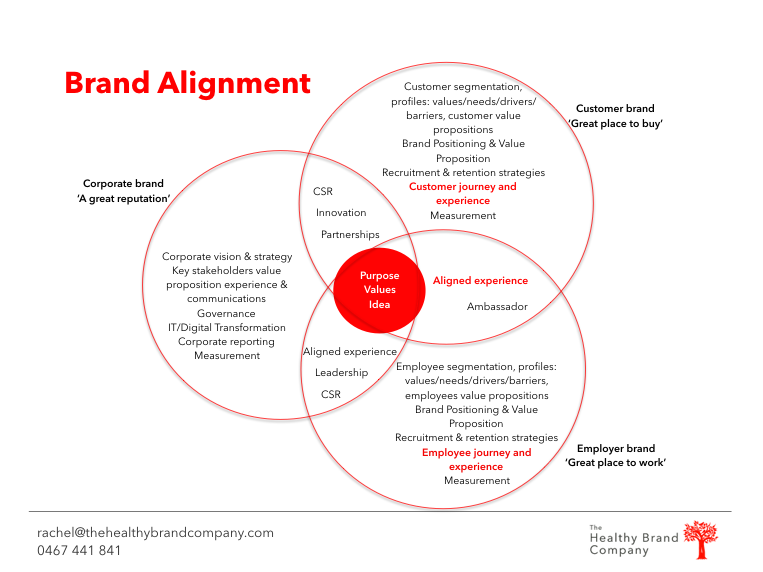Aligning the employee experience to the customer experience seems to be a hot topic at the moment. But similar to the rise of customer experience itself, the visibility of brand in the discussion is rather miniscule. Especially considering the power of brand to guide delivery of meaningful experiences to customers and employees.
Whether the experience is service from a person or a bot, a product or an environment, the employees who own it are more likely to deliver an experience that reinforces the brand (vs detracts from it) and is relevant to the customer at that point in time, if they are aligned to the brand.
We spoke to First 5000 about what to consider when aligning your customer and employee experience.
http://www.first5000.com.au/blog/how-the-brand-aligns-customer-and-employee-experience/
Full text here:
How brand aligns customer and employee experience
When people are talking about aligning customer and employee experience, they seem to be forgetting about the role of the brand.
There are two chronological stages to aligning customer and employee experience and they both involve brand, in fact brand is integral and helps align the two:
1) Aligning customer and employer brands and developing the employee experience so that the organisation delivers against the brand promise to its employees
2) Directly aligning the employee experience to stages in the customer journey to facilitate creating customer experiences that deliver against the brand promise to customers
1) Aligning customer and employer brands to develop the employee experience so that the organisation delivers against the brand promise to its employees
We have to remember that employees are both customers of and ambassadors for the brand. If your brand promises it will help your customers ‘go further’ then by aligning your employer brand to this promise helps attract, retain and engage employees who value this proposition themselves – e.g. this company helps me to ‘go further’ in my career – and empowers them to deliver authentic, on brand customer experiences.
The employee experience that delivers against the brand promise to its employees is designed across the employee journey or lifecycle: from when they’re not even thinking about being an employee to recruitment, selection and on-boarding; through the working experience (culture, managers/mentors, internal and change management communications, working environment, CSR opportunities); leadership, performance and training; to off-boarding. Every touch-point should reflect the brand promise.
This stage involves (not in chronological order, will depend on where your organisation is with customer, corporate and employer brands):
– Aligning customer and employer brands around a common purpose, values and idea
– Translating values to behaviours as the basis for your culture ‘values in action’
– Defining the employee experience across the employee lifecycle that reflects the brand at every touch-point
– Developing employee value proposition
– Identifying the employee segments, their profile: values, needs, drivers and barriers, value proposition and experience
– Attract, retain and engage employees who are aligned to the brand
– Set KPIS, measure and evolve
2) Directly aligning the employee experience to stages in the customer journey to facilitate creating customer experiences that deliver against the brand promise to customers
By providing employees with the right tools, training and support at every point of the customer journey, you can empower them to consistently deliver on-brand customer experiences.
This stage involves (in chronological order):
– Aligned employees – see 1) above
– Identify stages in the customer journey and key touch-points
– Identify customer behaviour at each stage and touch-point, key drivers and barriers/pain points
– Define the desired on-brand customer experience at each touch-point, designed to nudge customers forward
– Align the employee experience to each customer experience, identifying the tools, training and support they need at each point
– Set KPIs, measure and evolve
An example from a few years ago is Westpac. The brand promise was about doing things differently to other banks. The customer experience pain point was being passed from pillar to post and not being able to get an answer, both in branch and on the phone. We wanted to be different to other banks and offer customers an experience whereby they could ask one person a question and that person would be responsible for finding the answer and closing the loop. The ‘Ask Once’ idea required changes in process, resourcing, capabilities training and behaviour ‘doing things differently’ for employees to deliver the desired customer experience. No mean feat for a highly regulated and process-driven industry.
The key to success is having employees who are aligned to the brand delivering and/or supporting the delivery of on-brand customer experiences.




